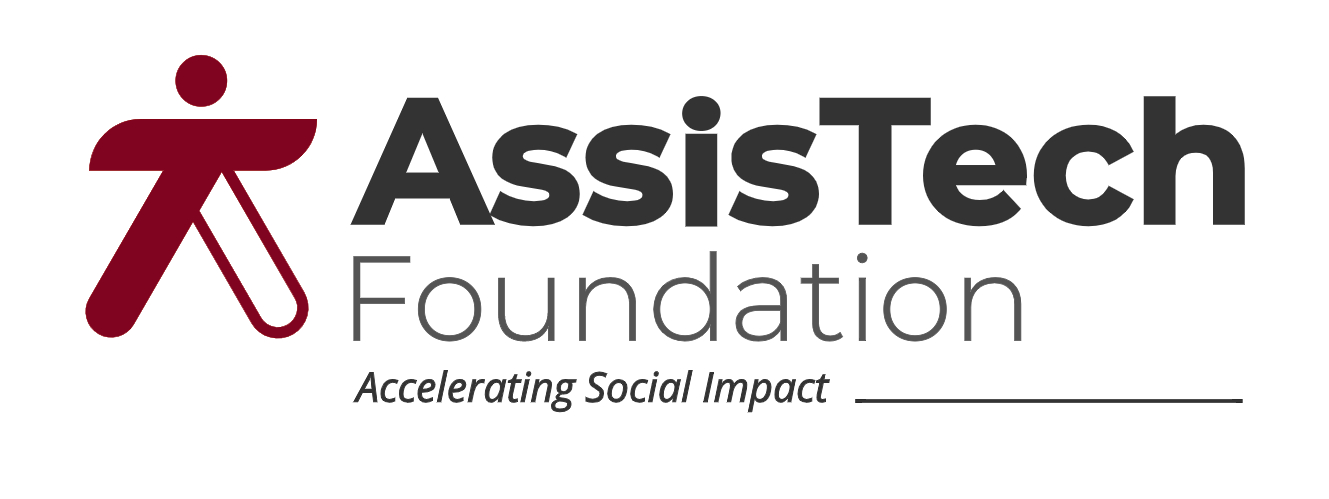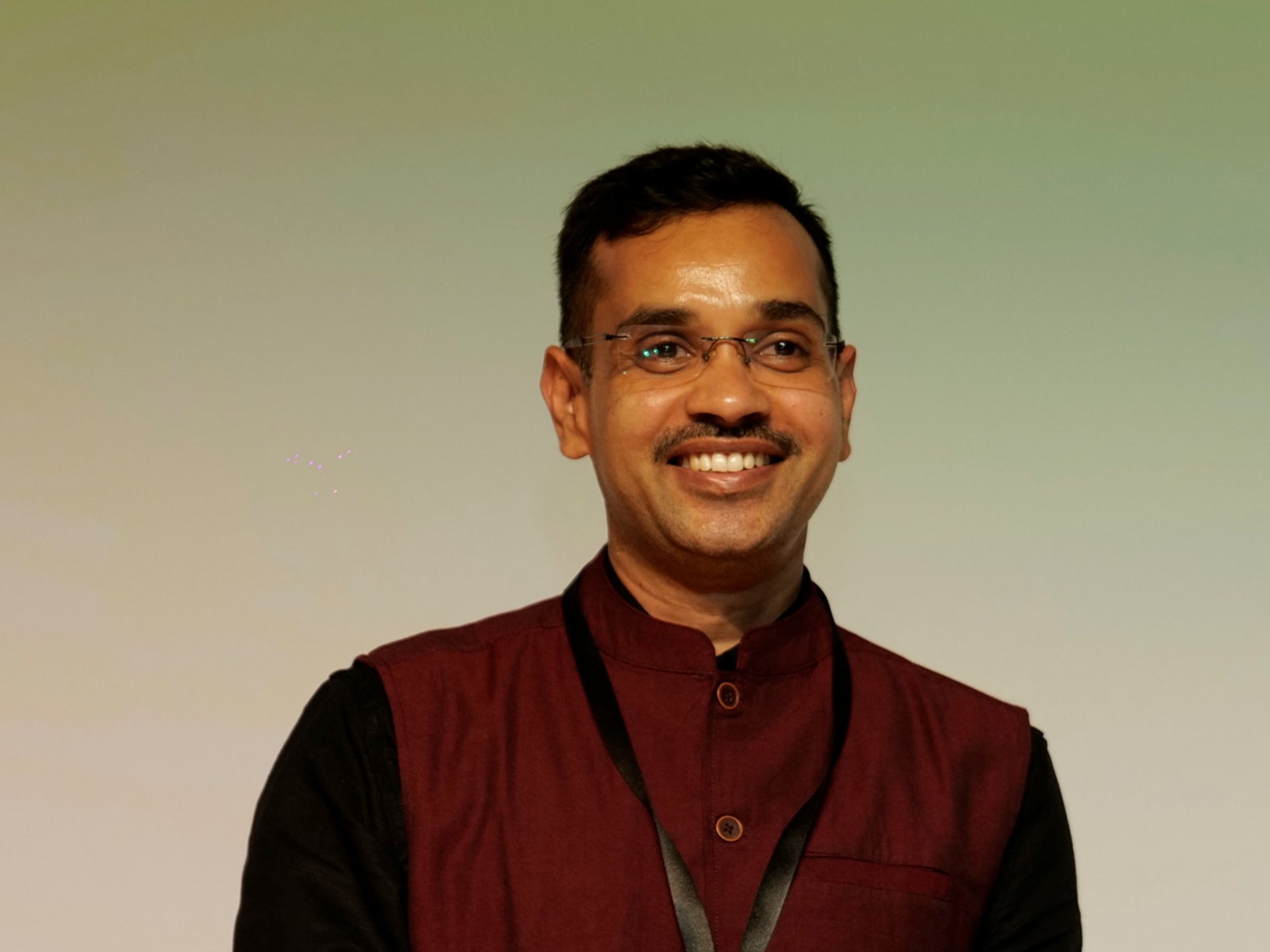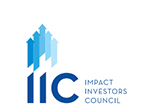|
Catalysing Capital for Impact
Dialogue with Prateek Madhav, Co-Founder & CEO,
AssisTech Foundation (ATF)
|
|

1 Could you share a little with us, on your professional journey that led to your interest in working in the assistive technology (AT) space?
|
When I was shifted back to India from the US in 2009, I started volunteering for disability focused non-profit organizations. An early experience was in 2012 when I got involved in organizing the first T20 World Cup Cricket for the Blind in India. We created an organization, Cricket Association for the Blind (CABI) which was equivalent to the BCCI. Traditionally, we have viewed the disability space with a lot of pity and sympathy, but then, when I started getting involved, I realized that People with Disabilities (PwDs) live with so much of hope and have immense talent and creativity. All we had to do is to give them reasonable accommodation. Traditionally, people with disabilities use old tools and this led to me feeling a dichotomy in my life. I would go to Accenture and build all these cool analytics using AI and machine learning and would see PwDs using old technologies (I felt like we were still living in the fourteenth century). So I thought, what if, we use the same brilliant technology we were using at Accenture, can be used to build solutions to enable learning, livelihood and living of PwDs?
So in a way we were in two eras. And I always questioned why, and that's when I took up a full-time role with one of the nonprofits as a CEO in 2015. We tripled the organization impact by launching many technology-led initiatives including setting up 15 inclusive skilling centers across India. During that tenure, I was meeting/ supporting some innovators/ entrepreneurs who were building assistive tech (AT) for PwD. We established ATF as a Section-8, non-profit company back in 2018 to build an ecosystem to support such AT innovations and see how we can bring in new-thinking technology to the disability space. All of us on the ATF board have been a part of Industry for multiple decades including organizations like Microsoft, Infosys etc.
|
2
What is the nature of innovations that ATF works with? Could you share a little on the ecosystem that you have built with startups?
|
We have a network of 450+ Assistive Technology innovators and startups in the country. We have done a lot of work to promote innovation and build this AT Ecosystem. Earlier, we could see innovations happening in a particular segment of disability; where you would see a lot of innovations coming for people with vision blindness and other physical disabilities. But then the moment we went to, what in our world we call ‘invisible disabilities’, neurodevelopment and neurodiversity areas, there was nothing. I mean nothing, as in nothing, in terms of tech innovation. We could understand why, because our understanding of disabilities related to touch and feel was better. But, as a society, I don't think we still understand all the challenges related to neurodevelopmental disabilities.
However, in the last five to six years, we've been able to do significant work with the key stakeholders including non profits, parent groups as well as governments, where we are able to, have lots of tech coming in. Imagine how cool it is if a startup is developing an AI-ML based solution to early detect autism or a scenario if we use AR-VR to enhance and accelerate the learning for kids with Autism.
So, now we have solutions across almost all kinds of disabilities which is amazing.
To give you another dimension - we see innovation getting democratized. We run our acceleration program, which is now into cohort six. We have 54 startups in our portfolio, whom we mentor. It’s a 4.5 month program where we support these AT startups with mentorship in disability, technology, business, market access and other related areas. I’m glad to share that now, we not only get startup applications from tier 1 cities like Bengaluru, Mumbai, Delhi etc but also we are seeing applications from tier 2 and tier 3 cities, sometimes from places, which I may not have even heard of! This is great news, because today, we should not be limiting innovation to only tier one locations. As a part of building this ecosystem, ATF has done a lot to work supporting innovations in tier 2 and tier 3 cities through local incubators and educational institutes.
Since we are now working with so many hundreds of nonprofits and institutions, we see that a lot of these innovations are done by people with disabilities themselves. So there are phenomenal founders who are not just aspiring to take care of their own challenges, but also solving for the experience of millions of people.
|
3
How has this space evolved over the years? How mature are startups today, when it comes to their business model development?
|
Earlier, we could see startups more in the early stages and their death rate was more than ninety percent. But then we have been able to do a lot of work with the community, investors and corporate and today I am happy to share with you that out of the existing 54 startups in our portfolio, 50% are revenue making. A lot of them are on the path to profitability. So while maturities are coming, there are tons of challenges as well.
I look at the ecosystem as a hexagon, where startups are at the center. The first leg is the government who is the policy maker and the buyer and the distributor. The second aspect is Corporate Diversity and Inclusion, technology mentoring and product innovation. The third angle involves the nonprofits and the disability ecosystem including people with disabilities and disability experts. The fourth dimension involves the educational institutions, because we need to promote better research in assistive technology. The next dimension is the investor, without whom, nothing will happen. Last being, global partnerships. So the mission is to leverage this entire network.
|
4
Could you share some of the challenges that you see startups facing? What could be the pathway to addressing them?
|
Funding is still a topic which we need to work upon, such that we put together a comprehensive pitch for the sector and not just for one startup. The second challenge is how could these solutions be made real and find the product market fit. We understand an e-commerce startup very well, because we are everyday customers, but doing a startup in the disability space is a big No! We need to understand how lived experiences can be built in. I have seen some of the best tech solutions coming out from esteemed universities, but often those tech solutions do not work because they never consulted any person with a disability.
Another challenge is to do with distribution, because many people with disabilities live in rural areas. We can get some of the best solutions sitting in Bangalore, Delhi or Mumbai but to be able to gain complete market access and monetize the business model is a challenge.
It is not that all of these challenges continue to remain at the level they existed six years back. We have tried solving some of these issues and a lot of these attempts have been working. I will give you an example. You may have heard of NeoMotion (ATF portfolio startup by students from IIT Madras, they got featured in Shark Tank) - they had built a good design for a wheelchair. We helped them bring up the product by building a scooter which is battery operated. NeoMotion partnered with Zomato to hire people with disabilities to do food deliveries. So now, people who were not even visible to you and I are actually coming out of their home, delivering and earning INR 18,000- INR 25,000. This is not just financial independence that is being created, but with such solutions, awareness is also getting built.
Awareness and education of investors is definitely an issue. Because of platforms like Shark Tank, awareness is increasing but understanding of the space is still limited. Also, we do not have a platform where we can bring, say the top 25 assistive technology startups to 50 investors. In partnership with the Government of Karnataka, ATF is building India’s first Centre of Excellence (CoE) for Assistive Technology.
Thirdly, there are no role models today. We know how role modeling works in our industry and investment industry. We have seen in the Western world, how there is a rally behind people in the sector. This hasn't happened yet in India.
We have also founded a global network called the Inclusive Innovation Network (+N), of six countries which includes ATF, from India. We are giving market access to our startups in those countries as well. It is not that we need only product innovations in this, but we need business model innovations as well. CSR funding can also play a role here. The 450+ startups, where we see maturity coming in, have raised money primarily through grants, challenges and awards. We have also been speaking to multiple people to see how we can increase the overall investment game because we can see at least 30 to 40 startups who are scalable. They need growth funding; they need patient capital.
|
5
From our recent conversations with entrepreneurs in this space we understand that the market for (neurodevelopmental) disability solutions is developing.
How are you seeing the demand and ability to pay for assistive technologies, shape up? Is there an equal interest and inclination by customers to bear out-of-pocket expenses for the solutions?
|
Each disability is very different. The target market segments are different, and awareness levels are different. A wheelchair is a better understood product than some other technologies. One challenge is that many startups are limited in their imagination and aspiration. We need to rethink market access for assistive technology innovation in India and outside as well. Traditional methods to serve PwDs have worked, but very suboptimally. This sector has been driven by traditional NGOs, and we should not take them out of the equation. They can be useful when it comes to pilot testing and even distribution, since they are the eyes and the ears of the people on ground. But we also need the startups to drive innovation and adoption. For example, could we explore micro entrepreneurship by a person with disability as an alternate mechanism for distribution. This is something which has worked really well for many organizations in rural or semi-urban areas in the ecommerce space.
Under every disability segment, we will find a set of customers willing and able to pay for solutions. Disabilities can happen to any of us and hence, the moment you go with that thought and build its economic equivalent, it becomes a pyramid. And the pyramid is with people who can afford a therapy session, which is 1000 rupees per session for a K12 learning. But then you'll also find people who could afford it, if you can subsidize it. And then you'll always find a fat bottom in countries like us and Kenya, where people can never afford it. You need a different market access or a business model for that. It's true for all disabilities. Obviously the pyramid will look different for different disabilities, but there is a pyramid nevertheless.
Sometimes a B2B model will work. For example, we have a startup which has developed an artificial intelligence solution wherein a real-time bot will show by sign language, as we converse. It is a tough problem to solve because sign language is not just hand gestures, it also includes shoulders, facial expressions and eye movement. This solution has a B2B use case. We have also seen a B2C solution called Avaz, which works on Alternate and Augmented Communication (AAC); it is helping kids with autism to communicate. B2G is of course the traditional model. So basically, it is not that any model is absent. It is not that any segment is absent. Let us not look at this sector as a special sector, if not as vibrant, as diverse a sector as any other like climate.
I'm not here to tell you, we need special consideration. Disability is not an issue. The issue is accessibility and awareness. Hence, the challenges in the ecosystem are different than any other sector.
|
6
What are some of the priority areas for ATF, in the near future?
|
Disability sector is underinvested. We need more patient capital in the Accessibility and Assistive Technology Sector to support 70+ million People with disabilities in India (1.1 Billion PwDs in the world). In partnership with the Government of India (DPIIT), ATF is setting up a seed fund. We are also growing our network globally to promote AT innovations, give international market access to Indian AT startups and partner with investors. We are setting up India’s first Centre of Excellence for AT which will have an AT experience center, AT pilot testing & training facilities, AT research center etc. ATunify, a thought leadership initiative, is about building a taxonomy for assistive technology.
Technology is a force multiplier. I am very excited, because I think the ecosystem, which is developing, is really able to create a scalable positive impact. With ATF’s work with startups and other initiatives, we are already reaching out to close to a million (910,000) people with disabilities. In the next 3 years, our mission is to impact 5 million people with disabilities. We need collaboration and support from many organizations, individuals and investors. The way we look at impact is looking at the learning-livelihood-living of people with disability. This is how we measure our impact; livelihood being the leading pillar of it.
|
|
|

Prateek is a Jaipur-born, NIT & IIM Calcutta-educated, corporate-digital-technology-leader turned happy-social-entrepreneur. He gave up an 18-year-old career in IT industry which included being in the Global Analytics team at Accenture to start the second inning of his career where he embarked on a journey of establishing the largest AT innovation ecosystem in India for promotion of empowerment of people with disabilities in the spheres of learning, livelihood & living.
In the new journey, Prateek served as the CEO of Samarthanam Trust for the Disabled, a prominent NGO. He has also co-founded the Global Alliance on Assistive Technology Innovations and Investments, known as the Inclusive Innovation Network (+N) along with AT pioneers & partners from RemarkAble (Australia), Access to Success (Canada), AT Innovate Now (Kenya), Global Centre of Possibility (New Zealand) & Disability Impact Partners (Hong Kong).
Prateek has been a member of the steering committee instituted by NITI Aayog to design National Strategic Framework of AT in India with an objective to make India as a Global Hub of Assistive Technology for welfare of people with disabilities. He was also appointed as an Advisory Committee member for Dr. Reddy's Foundation & has been one of the advisors to assist the Commissioner, Department of Empowerment of Differently Abled & Senior Citizens, GoK around empowerment led by promotion and adoption of AT. Globally, Prateek is a member of the advisory board of Al Noor, Dubai, UAE, a center that provides rehabilitation, recreation, and vocational training to people with disabilities.
Prateek has been honored with the prestigious NCPEDP-LTIMindtree Helen Keller Award for 2023 under Category B – Role Model Supporter of Increased Employment Opportunities for Persons with Disabilities.
About AssisTech Foundation:
AssisTech Foundation (ATF), is India’s first assistive technology-focused ecosystem that supports and promotes innovative disability technology start-ups. Since its inception, ATF’s goal has been to create more awareness about the world of disability and bring about a positive impact through the start-ups we nurture. Through supporting entrepreneurs and innovators in the AT ecosystem, ATF has pioneered groundbreaking solutions that have shattered limitations, granting newfound possibilities to those who once faced insurmountable challenges. In its Acceleration program, i.e. a cohort-based program for enabling AT start-ups in Disability understanding, Business, Technology, Organization Design etc. ATF has an existing portfolio of 54 start-ups. It is a part of the steering committee instituted by Niti Aayog to design National Strategic Framework for Assistive Technology for Assistive Technology in India, with an objective to make India as a Global Hub of Assistive Technology.
|
|
About Impact Investors Council:
Impact Investors Council, India (IIC) is a member-based national industry body formed with an
objective to build and strengthen the impact investing eco-system in India. To know more about our work visit https://iiic.in or reach out to secretariat@iiic.in
|
Disclaimer: Data and Information in this newsletter is made available in good faith with the exclusive intention of helping market and ecosystem players, policymakers and the public build a greater
understanding of the Indian impact investing market. The data is collated from sources believed to be reliable and accurate at the time of publication. Readers are urged to exercise independent judgment and diligence in the
usage of this information for any investment decisions
Some of the information provided in this newsletter is supplied by third parties. It is important that all users understand that third party information is not an endorsement of any nature and has been put together with the
sole purpose of benefiting stakeholders.
|
| Unsubscribe |
|
|
|


